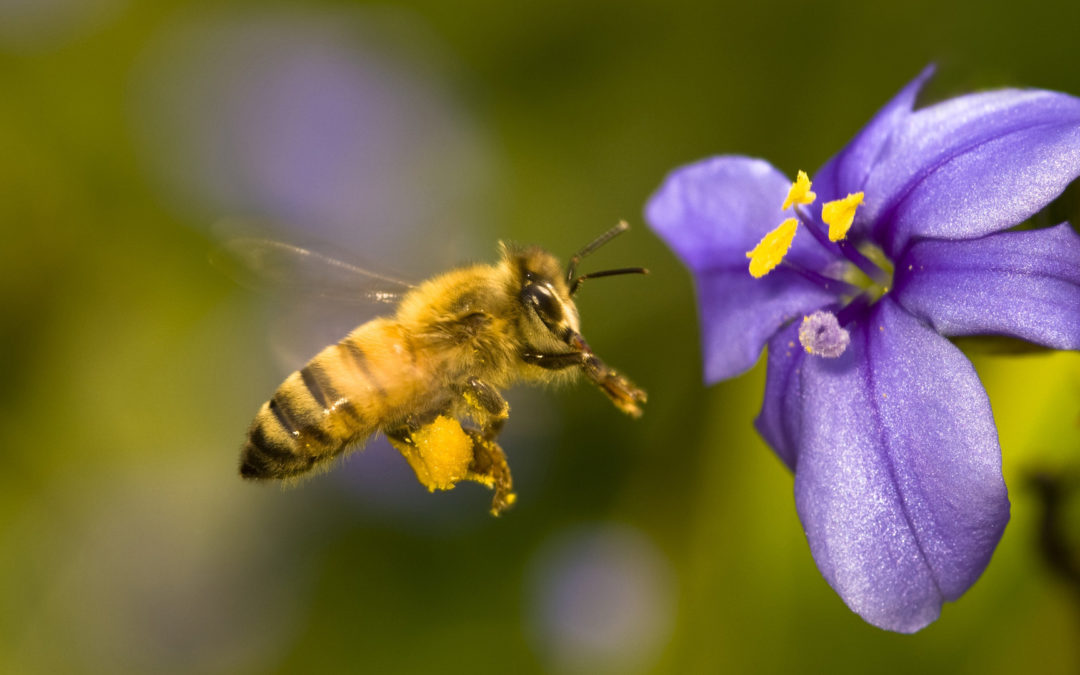Ever thought about how different pollinators are attracted to different flowers in your garden? It’s not just by chance that bees are buzzing around your lilac blossoms! Colour plays an enormous role, alongside position of flower on the plant, and scent.
Bees are mostly attracted to blue and violet colours. Interestingly – they can see most colours aside from red! They do have a sense of smell, but this is used mainly for protection and identifying intruders. Their sense of smell is only effective when they are in very close proximity to the flower. If you’d like to attract bees to your garden, try the sweet purple hues of Prostanthera Minty or Alyogyne Karana.
Butterflies enjoy bright yellow and orange flowers particularly. They use what is known as “nectar guides” to see pollen. The flowers present a visual signal, either in form or colouring to advertise pollen. Sometimes we can see these patterns, and sometimes they are in the ultraviolet range. Butterflies vary widely in their sensitivity to light, and are considered to have the widest visual range of any form of wildlife. Butterflies can indeed smell – Antennae, palps, legs, and many other parts of the body are studded with sense receptors that are used to smell. The sense of smell is used for finding food and mates. Try planting some nectar-rich natives such as Acacia Pot O Gold or Pandorea Wonga Gold Sunset to attract butterflies.
Birds tend to prefer bold reds and pinks. They are able to see ultraviolet light, and especially respond to reflective flowers, fruits and berries. Most green leaves don’t reflect UV light, so they are able to strongly identify food sources amongst the foliage. Colours that already are bright to human eyes are, if amplified by UV reflectance, probably even brighter to birds. This is why red stands out in particular. Birds are primarily “sight animals”, so their sense of smell isn’t as sharp as other pollinators. The beautiful red flowers of Callistemon Cherry Time and Grevillea Little Robyn will bring lots of birds to your garden.
Mammals (eg: bats and possums) and other night-time pollinators, such as moths and geckos, don’t rely on colours, so you’ll find their favourite flowers tend to be white and heavily fragranced. White flowers “glow” in the moonlight, beckoning nocturnal animals to have a midnight feast. To attract night pollinators, try planting Eucalyptus Winter Light or Eucalyptus Honey Pots.
Next time you plant something in your garden, have a think about who will come and visit!


